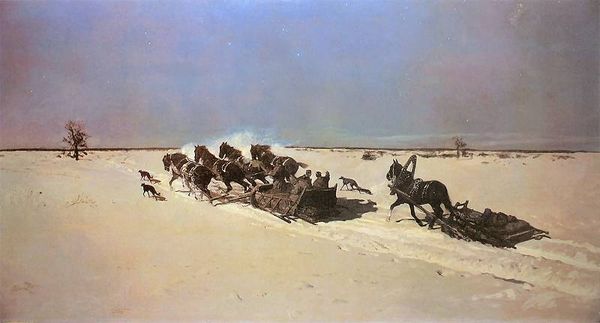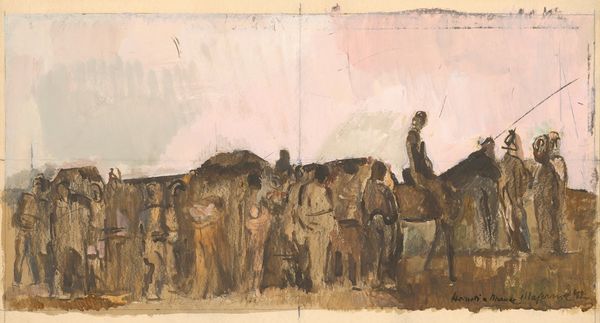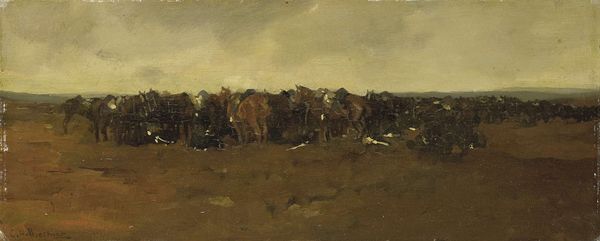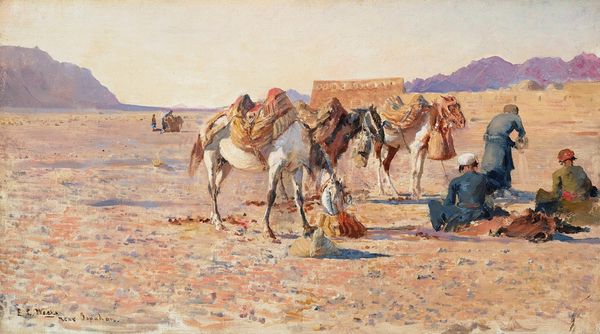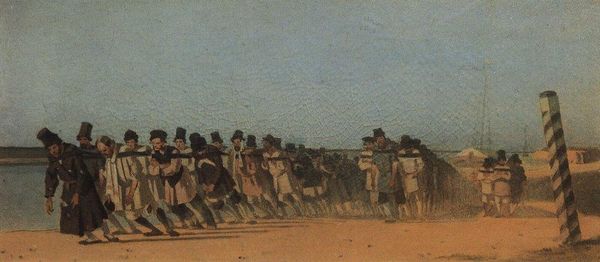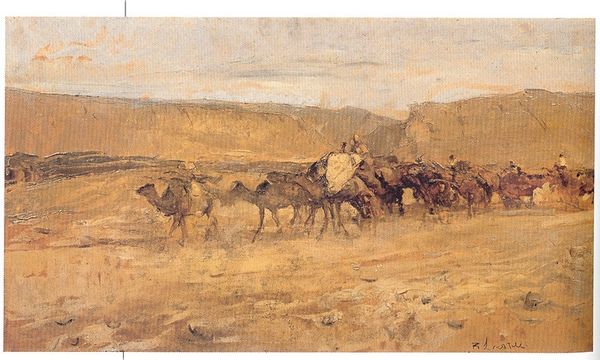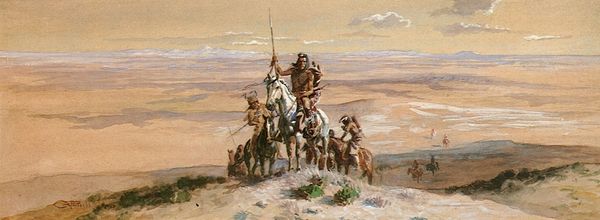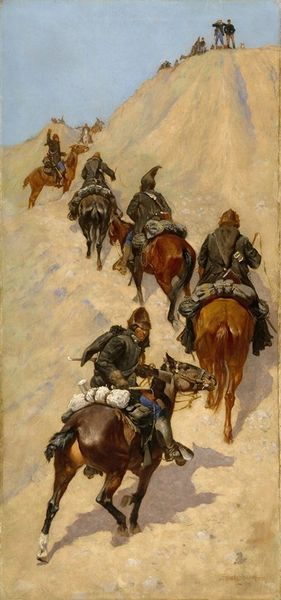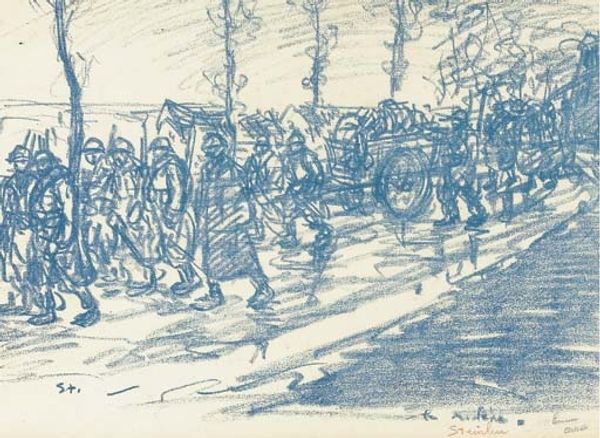
watercolor
#
gouache
#
water colours
#
narrative-art
#
impressionism
#
landscape
#
figuration
#
watercolor
#
coloured pencil
Copyright: Public domain
Editor: We’re looking at ‘A Lament in the Desert’ by Elizabeth Thompson. It’s rendered in watercolor, gouache, and colored pencil, depicting a line of soldiers on a seemingly endless journey through a desert landscape under the moonlight. It's so melancholic. What narrative threads do you find most compelling in this work? Curator: This painting provides an interesting glimpse into the romanticization of military life within the Victorian era, where figures like Thompson found acclaim. Consider the setting – a desolate desert under a stark moon. Does that emptiness reflect a broader social anxiety related to the human cost of empire-building, or merely amplify the heroism in enduring hardship? Editor: That’s a really interesting question. It almost feels like both, because the focus remains on the regiment despite this desolation. Were depictions of British soldiers like these common, particularly focusing on the exoticism of faraway colonial locales? Curator: Precisely! These images were strategically important. They presented the army as both noble and enduring in challenging environments. These scenes played a part in maintaining public support and morale amidst growing anti-war sentiment at the end of the century. What is visually emphasized? Editor: It looks like a quiet march through foreign territory. Is the procession idealized, meant to soften realities for a British public consuming images from imperial adventures? Curator: Precisely, note how Thompson employs an almost ethereal aesthetic through watercolor, diffusing the scene. There is less emphasis on immediate, tangible violence, focusing on endurance, rather than the brutalities inherent in warfare and conquest. How does that affect the experience of the scene? Editor: By softening those realities, it reinforces a narrative of order, discipline, and righteous expansion rather than potentially difficult truths of colonialism. Seeing that lament from a contemporary point of view reveals its function as much more than a pretty picture. Thank you for that insight! Curator: Of course. And considering it from the contemporary point of view adds layers to the work's existing narrative. It pushes us to look deeper at the messages it conveys, consciously or not, about its specific context.
Comments
No comments
Be the first to comment and join the conversation on the ultimate creative platform.

